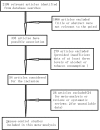Different levels in alcohol and tobacco consumption in head and neck cancer patients from 1957 to 2013
- PMID: 25875934
- PMCID: PMC4395416
- DOI: 10.1371/journal.pone.0124045
Different levels in alcohol and tobacco consumption in head and neck cancer patients from 1957 to 2013
Abstract
Objective: To provide a precise quantification of the association between alcohol and tobacco consumption trends in head and neck cancer patients over the past 45 years.
Methods: We combined findings from all studies published until March 2014 and evaluated the association between different levels in alcohol and tobacco consumption and head and neck cancers through a meta-analytic approach.
Results: We included 28 studies involving 13830 patients with head and neck cancer. In patients with alcohol consumption, the pooled odds ratio (OR) and 95% confidence interval (CI) were 1.29(1.06-1.57), 2.67(2.05-3.48) and 6.63(5.02-8.74) for light drinkers, moderate drinkers and heavy drinkers, respectively. In patients with tobacco consumption, the pooled OR and 95% CI were 2.33(1.84-2.95), 4.97(3.67-6.71) and 6.77(4.81-9.53) for light smokers, moderate smokers and heavy smokers, respectively.
Conclusion: The increased alcohol and tobacco consumption trends increased the risk of head and neck cancer over the past 45 years. Tobacco consumption was found to be a stronger risk factor for head and neck cancer than alcohol consumption. Thus, the control should be considered to limit the intake of alcohol and tobacco.
Conflict of interest statement
Figures





References
-
- Montero PH, Patel PD, Palmer FL, Patel SG, Shah JP, et al. (2012) Changing trends in smoking and alcohol consumption in patients with oral cancer treated at Memorial Sloan-Kettering Cancer Center from 1985 to 2009. Arch Otolaryngol Head Neck Surg 138: 817–822. 10.1001/archoto.2012.1792 - DOI - PubMed
-
- Coronado GD, Beasley J, Livaudais J (2011) Alcohol consumption and the risk of breast cancer. Salud Publica Mex 53: 440–447. - PubMed
Publication types
MeSH terms
LinkOut - more resources
Full Text Sources
Other Literature Sources
Medical
Miscellaneous

